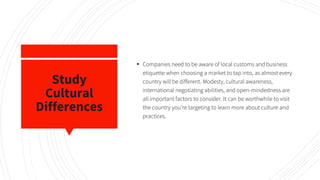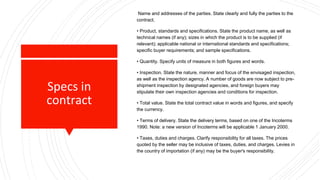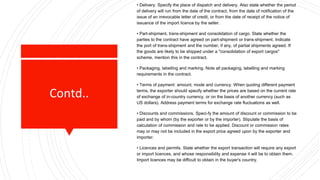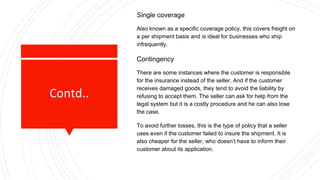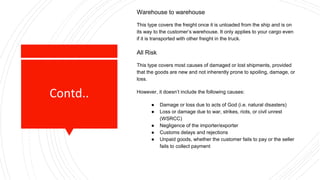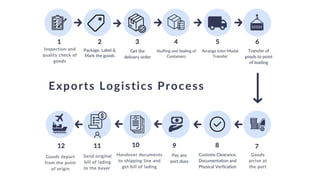The document provides information on developing an export marketing plan, including tips for key sections of the plan. It discusses developing a situational analysis, SWOT analysis, budgets, understanding the target country, and including an entry strategy detailing the marketing mix of product, price, place, and promotion. It also emphasizes studying cultural differences in the target market and outlining specifications in any export contracts.



